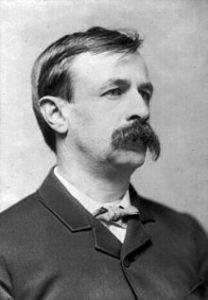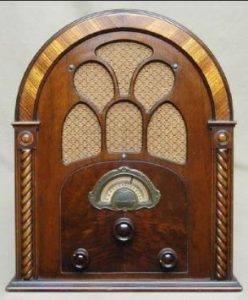Monthly Archives: October 2019
 Author of Looking Backward:2000-1887, Edward Bellamy, wrote in the novel first published in 1888 novel, asked his readers to imagine a scene in which a time-traveler from 1887 reacts to a technological advance from the early 21st century that he describes as, “An arrangement for providing everybody with music in their homes, perfect in quality, unlimited in quantity, suited to every mood, and beginning and ceasing at will.” It’s amazing to me that many writers of fiction, see the future in a way most of us can’t. Their imaginations manage to picture a future that sometimes, proves to be uncannily like real life in the future. Jules Verne was that way too.
Author of Looking Backward:2000-1887, Edward Bellamy, wrote in the novel first published in 1888 novel, asked his readers to imagine a scene in which a time-traveler from 1887 reacts to a technological advance from the early 21st century that he describes as, “An arrangement for providing everybody with music in their homes, perfect in quality, unlimited in quantity, suited to every mood, and beginning and ceasing at will.” It’s amazing to me that many writers of fiction, see the future in a way most of us can’t. Their imaginations manage to picture a future that sometimes, proves to be uncannily like real life in the future. Jules Verne was that way too.
In Bellamy’s imagination…almost inventor-like, this astonishing feat would be accomplished by a vast network of wires connecting individual homes with centrally located concert halls staffed round-the-clock with live performers. Of course, that would be a difficult task to pull off, but in the end, someone else took care of the finer points of Bellamy’s vision. As we all know, today we can turn on a radio, whether plugged into the outlets in our home, or a portable version that we carry around, and of course, these days every smart phone has the ability to listen wirelessly to radio stations, watch television, and download all the music our hearts could desire.
Bellamy’s vision came to pass much sooner than the 2000 predicted date, and without all the wiring he thought would be needed, but he wasn’t too far off in what the end outcome would be…at least for the homes. I doubt it ever occurred to him that it could all be done wirelessly, or that telephones could have the same capability and much more. Of course, at that time, telephones were still in their very primitive stages. On October 1, 1920, Scientific American magazine reported that the rapidly developing medium of radio would soon be used to broadcast music. A revolution in the role of music in everyday life was about to be born.
“It has been well known for some years that by placing a form of telephone transmitter in a concert hall or at any point where music is being played the sound may be carried over telephone wires to an ordinary telephone receiver at a distant point,” began the bulletin in the October 1, 1920 issue of the popular science monthly, “but it is only recently that a method of transmitting music by radio has been found possible.”
People still argue about radio’s origins to this day, but its basic workings had been understood for upwards of 20 years at the time of this announcement. It was only in the years immediately following World War I,  however, that radio made the transition from scientific curiosity to practical technology. Then, by late 1919, Britain, the United States and elsewhere were beginning experiments that would lead to the breakthrough use of radio not just as a replacement for the telegraph, but as a communications and entertainment medium. The idea that Bellamy suggested, was coming to pass…a full 81 years sooner than he had expected.
however, that radio made the transition from scientific curiosity to practical technology. Then, by late 1919, Britain, the United States and elsewhere were beginning experiments that would lead to the breakthrough use of radio not just as a replacement for the telegraph, but as a communications and entertainment medium. The idea that Bellamy suggested, was coming to pass…a full 81 years sooner than he had expected.
It was those experiments that led to the public announcement in Scientific American. “Music can be performed at any place, radiated into the air through an ordinary radio transmitting set and received at any other place, even though hundreds of miles away,” the report continued, noting that “the music received can be made as loud as desired by suitable operation of the receiving apparatus.” “Experimental concerts are at present being conducted every Friday evening from 8:30 to 11:00 by the Radio Laboratory of the Bureau of Standard. The possibilities of such centralized radio concerts are great and extremely interesting.” Bellamy’s dream had come to pass.

